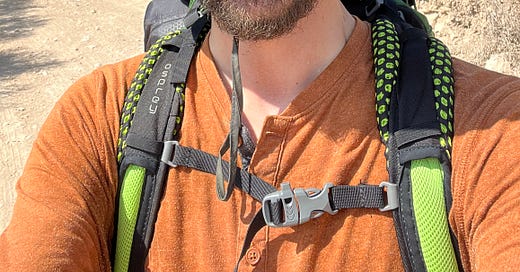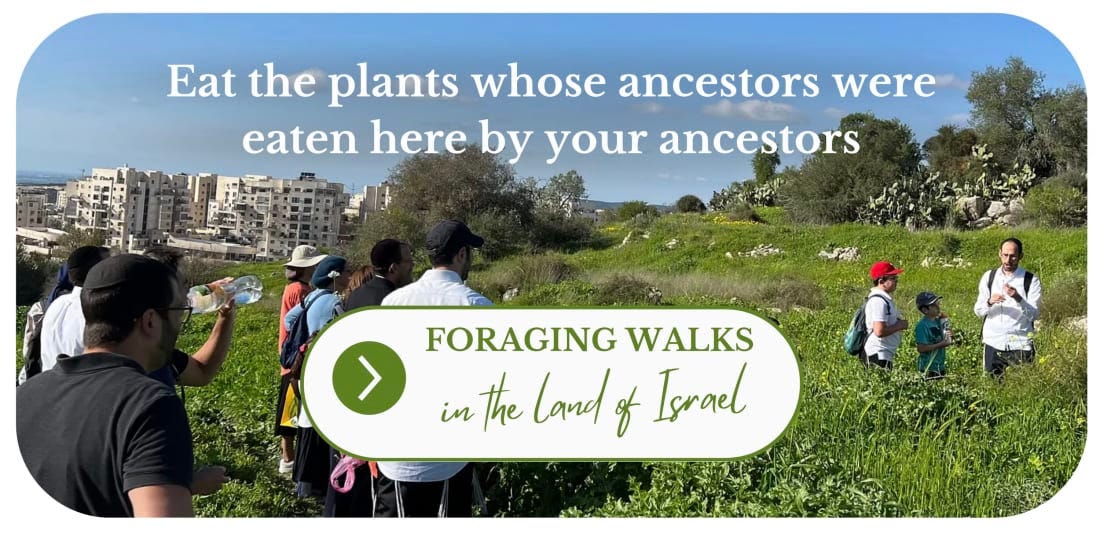Days on the Gilboa
Stories from a mountain ridge in northern Israel: hanging out with Israeli soldiers, learning life lessons from berries, watching a spider, and one last stop in the desert.
This post continues my story about visiting the Gilboa Mountain in northern Israel.
At the Gilboa’s Summit
Early in the morning, I hoisted my pack and headed upwards on the jeep trail hugging the edge of the cliff. The view was stunning, and I often stopped to look as I marched up and up.
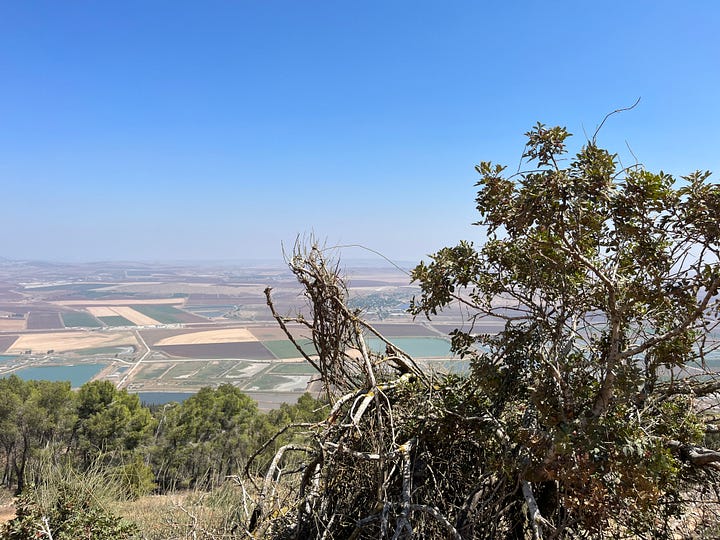

Finally, I reached the Gilboa’s highest peak.
To the north, I saw the Charod Valley spread out far below, its fertile fields looking like a plaid blanket covering the ground. Beyond the valley rose up the mountains of the lower Galil.
To the south, I saw the end of the biblical Shomron region, known to lots of folks today as the northern West Bank, spread out far below. On that side, instead of verdant fields, there is the large city of Jenin, which you may have heard of from the frequent clashes there between the warring descendants of Abraham.
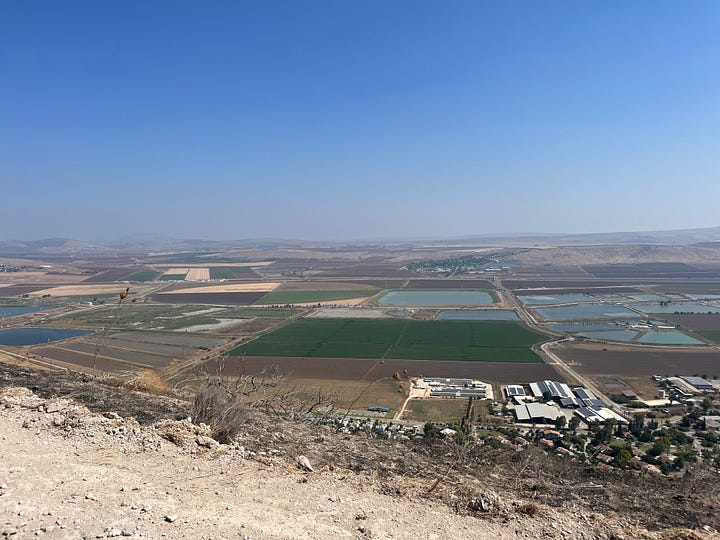
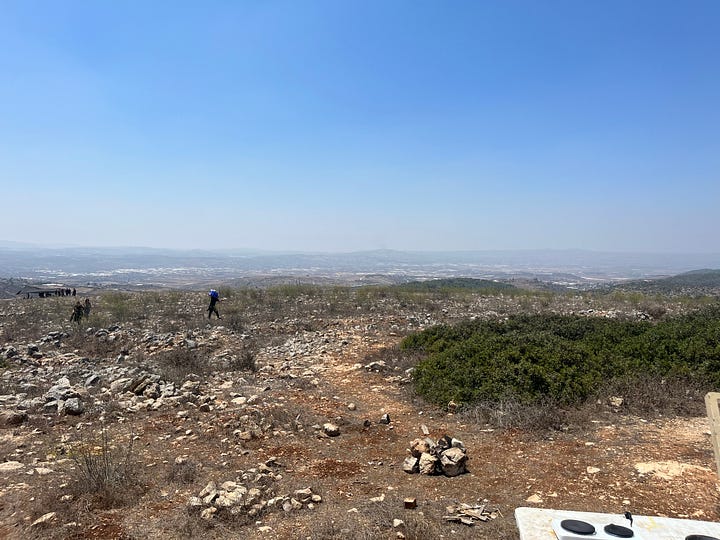
In fact, the day I visited there was a large group of Israeli rookie soldiers training on various navigation and surveillance equipment. Most of the warriors were huddled under a tarp not far from the lookout where their commander was frying eggs for his young charges (seriously)!
The commander and I chatted a bit. He invited me to head over anytime to The Tarp to fill up on water from their ice cooler.
I wasn’t terribly low on water, but I liked the idea of hobnobbing with soldiers and army gadgetry. So after settling in a bit, I hopped through a field of wild fennel to reach The Tarp.
But when I got there, I couldn’t find my erstwhile benefactor in the sea of identical uniforms.
Apparently some of the other warriors thought I was snooping around too much, maybe even a spy. So after asking a few pointed questions, and kindly sharing some water and ice, they sent me on my merry way, flying back through the field of fennel.
Lessons for Life
Several roads and trails cross the Gilboa’s ridges. I headed west on the bike trail, and was soon trudging through a charming forest that frequently opened to show the stunning view to the north.
Even in the shade, the day was turning very hot. To stay happy and safe, I drank lots of water, some of it courtesy of the Israel Defense Forces. But no less important was to replenish electrolytes lost from sweating.
I was well stocked with nuts and cocoa, but Natural Israel offered its own help: tons of carob, buckthorn, and mastic trees, all loaded with delicious and nutrient-packed berries.
Getting out into nature teaches how to close the gaps between life’s problems and solutions. If we stop to pay attention, the ups and downs become one seamless story: the summer brings heat, and the summer brings berries.
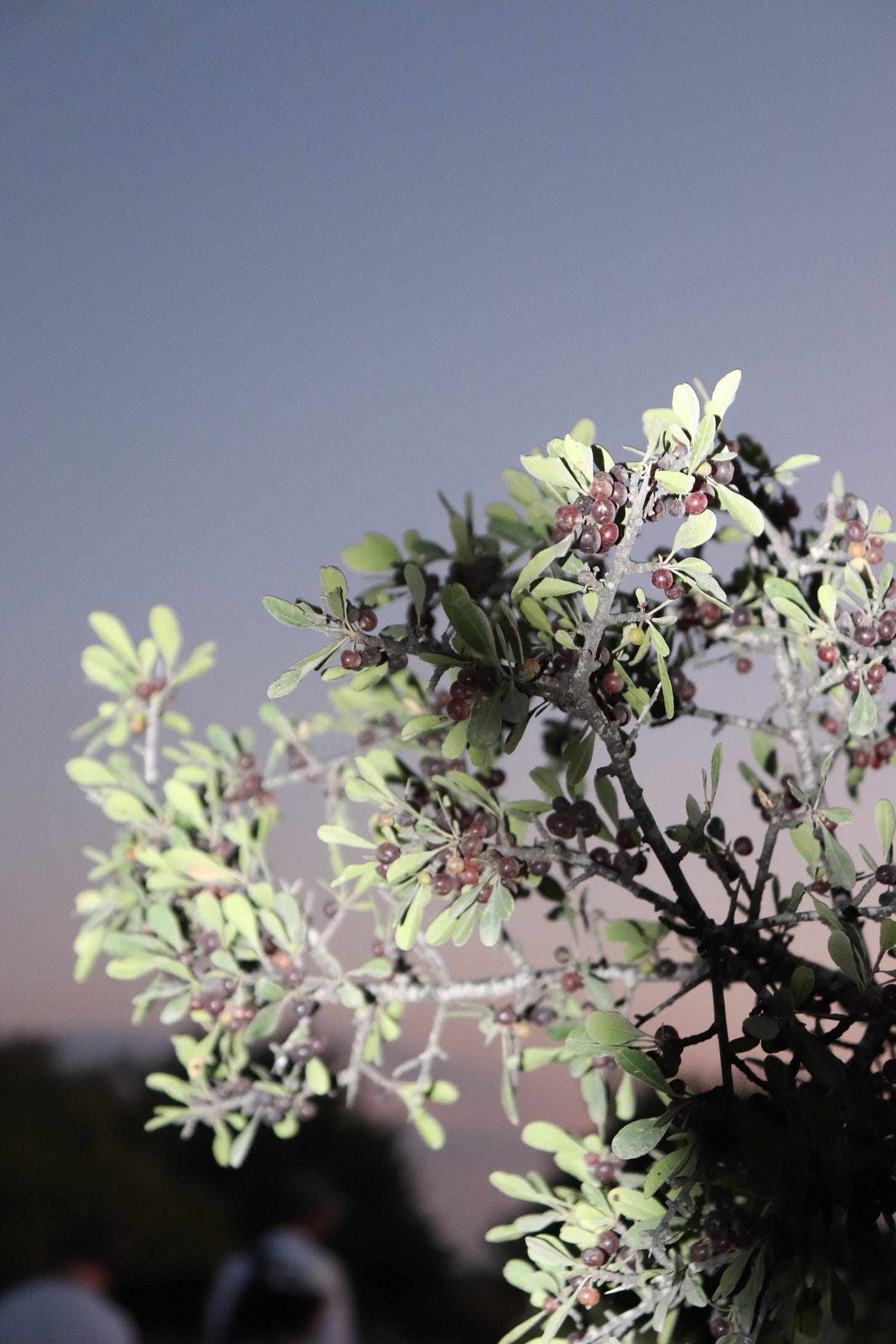
The Spider
Tramping along the Gilboa, I came across a huge spider sitting right in the middle of his huge, perfectly spun web. I looked a him a long time. I guess he looked back. I tried to get some pics, from both sides. Didn’t come out perfect, but here’s a glimpse of this fellow’s majestic woven throne.
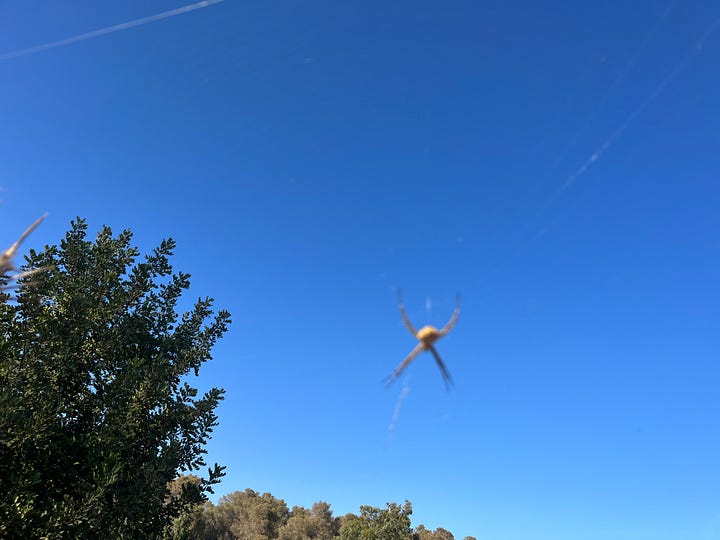

One Last Stop: Into the Desert
Long after I got home, Apple was kind enough to send me this mix of pics and clips from my trip. Not bad at all. If you’ve been carefully following Healthy Jew, you’ll recognize most of them.
But not all! Those last two pictures are from a little postscript to my trip. After I hiked down the Gilboa by the first rays of dawn, and then prayed and hung out by a little spring outside of the little village of Gidona, I still had a few hours left until I needed to head home.
So I caught the bus to Bet Shean, hopped onto another bus heading through the Jordan Valley to Jerusalem, and jumped off after a few stops to visit a place I’ve been wanting to visit for years.
The desert heat was scorching, even by my standards. My phone told me it was 107F, which felt about right. But this errand couldn’t wait any longer.
So I hoisted my pack and stomped off into the desert toward
Tel Rechov
Located right outside the little town by the same name (without the Tel part), Tel Rechov is one of the largest archeological sites in this land of archeological sites.
It was here, in a Byzantine-era shul, that excavators uncovered perhaps the most important ancient mosaic for students of Torah law: not a design or picture, but the entire beraisa de’tchumin, the Mishnaic scholars’ delineation of the legal borders of Israel’s primary region which passes right through here on the way to the Jordan river.1
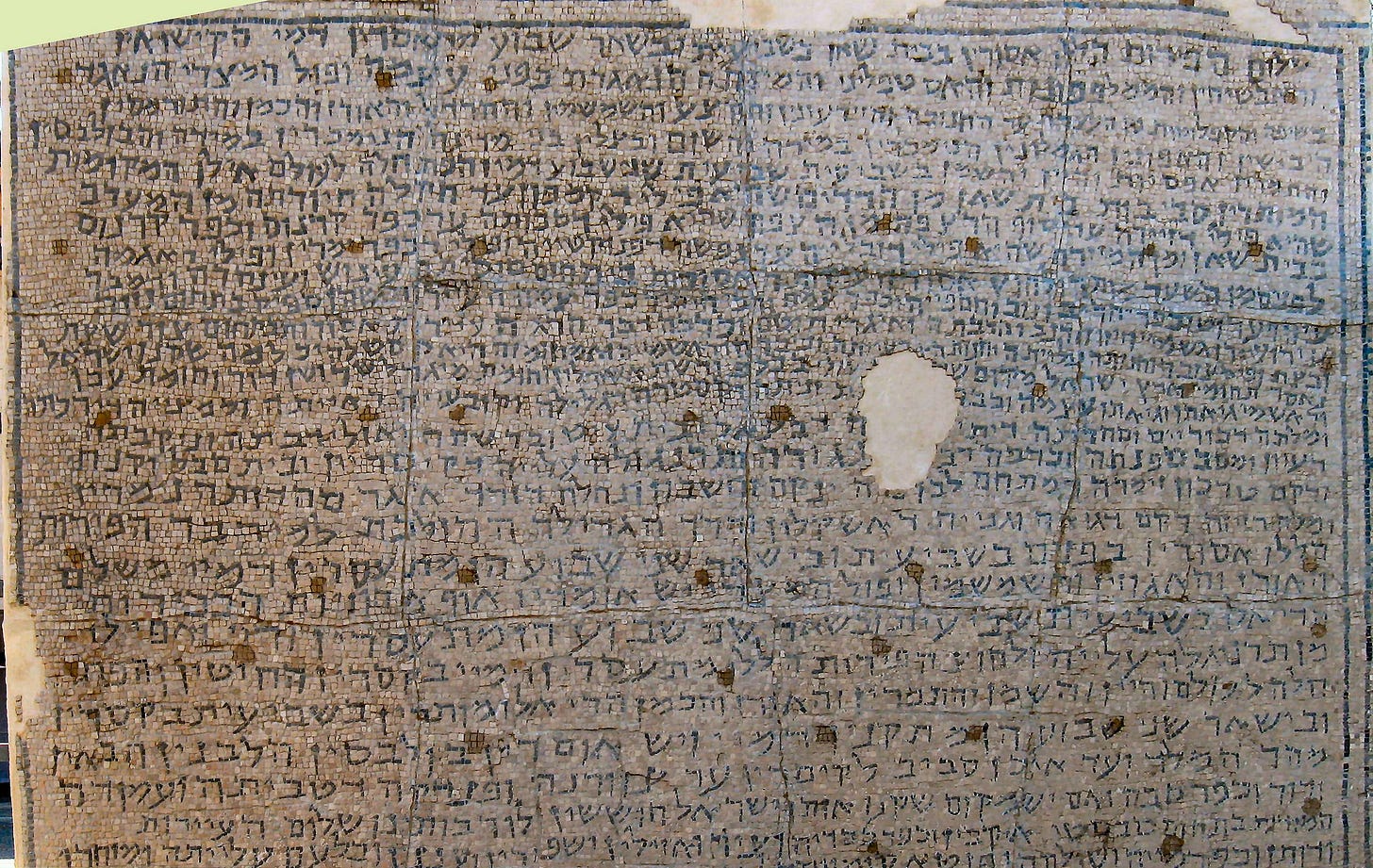
Understanding these boundaries has numerous ramifications in Jewish law, particularly regarding shmittah and tithes.
But since borders were described basically by lists of names, it was very hard to accurately transmit this teaching over dozens of generations to students who lived far from Israel and knew little of its geography. For this reason, there’s lots of confusion about the exact borders of biblical Israel.
This mosaic was written in an era when these locations were common knowledge, many hundreds of years before the first extant manuscript of this passage. Therefore, it’s considered one of the most reliable sources on the borders of ancient Israel.
Now, on this lovely afternoon, I was now standing on the hill where the teachers of my teachers of my teachers (plus a few more teachers…) painstakingly arranged little stones to tell the story of their beloved land’s borders.
Looking eastward, I saw the Jordan mountains rising up, an area that many opinions understand to be the second region of biblical Israel.
Looking west, I saw the eastern edge of the Gilboa ridge. I hadn’t visited there because its trails come uncomfortably close to the security fence. I thought of a good friend and reader of Healthy Jew whose daughter lives in one of the towns up there. May she and her family be safe and protected.

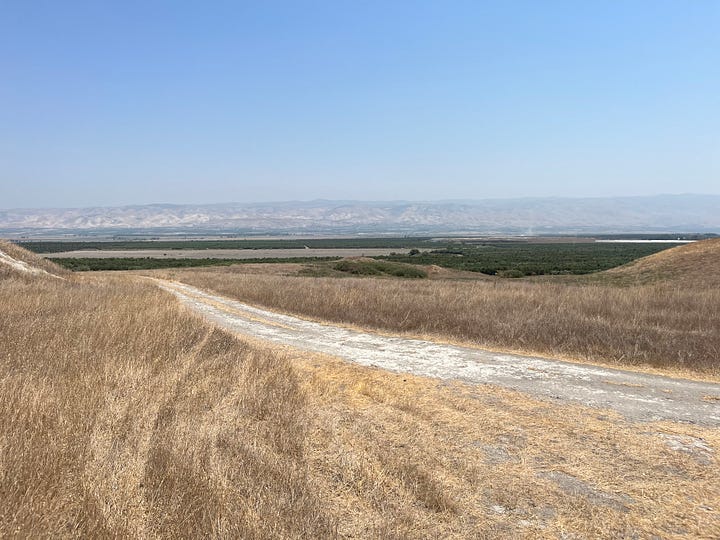
After a few minutes exploring the ruins, I headed back to the bus stop, and waited an hour in the marvelous heat for the next bus to Jerusalem.
Thank you for reading Healthy Jew.
Here are 2 great paths to continue the journey:
Also check out this intro and index to explore hundreds of posts about our 3 Healthy Jew topics: Wellness with Wisdom, Land of Life (Israel), and Sensible Spirituality.
Finally, always feel free to reach out here with any comments, questions, or complaints:
I look forward to hearing from you!
Be well,
Rabbi Shmuel Chaim Naiman
For more about the Rechov Mosaic, check out here: https://en.wikipedia.org/wiki/Mosaic_of_Rehob

